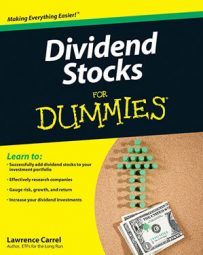One beautiful thing about dividends is that they aren’t limited to the U.S. You can go global with dividends, investing in both mature, developed economies and emerging, fast-growing economies. In the global economy, opportunities abound, but wherever you find opportunity, risk is right around the corner.
In terms of market capitalization, only 40 percent of the world’s companies reside in the U.S. market. That means that by investing only in the U.S., you shut yourself off from more than half the investing opportunities worldwide. And if you look at an international index weighted according to where dividends are paid, 70 percent of those investments reside outside the U.S.
In the U.S., you have three options: getting into American depository receipts, investing in global dividend-based mutual funds or ETFs, or buying shares on a foreign exchange.
Investing in American depositary receipts
American depositary receipts, better known as ADRs, are by far the easiest way to buy and directly own foreign stocks in the U.S. ADRs are dollar denominated and trade like equities on the U.S. stock market, but they aren’t stocks. They’re certificates issued by U.S. banks, which hold the underlying foreign shares in the local market and issue the certificates, or receipts, on the U.S. market to represent a specific number of the underlying security. Some ADRs represent two or more shares of the underlying stock.
Investing through a mutual fund or ETF
To buy foreign equities not available as ADRs, the best route is to buy an international mutual fund or ETF (exchange-traded fund). Many mutual fund and ETF companies offer funds that track stocks abroad. You can buy a fund that tracks the whole world, including or excluding U.S. stocks. You can buy funds that invest in just one country or specific area of the market, such as only Europe or only Asia.
Buying directly on foreign exchanges
Many full-service brokers and even some discount brokers let you buy and sell equities directly on a foreign stock exchange. For stocks that don’t trade as ADRs, buying directly offers one advantage and several potential disadvantages. The one sole advantage of direct trading on foreign exchanges is that you gain access to markets and stocks not represented by ADRs.

